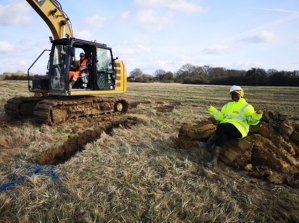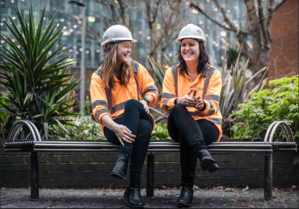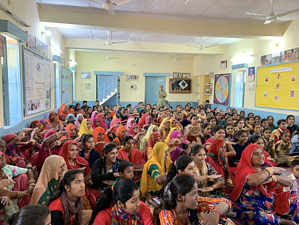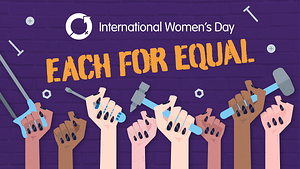Recent research from professional search engine findcourses.com has shown how diversity and inclusion training (D&I) can help the construction industry increase gender equality. How can you put it into practice in your organisation?
As we settle into the new decade, increasing gender diversity across industries feels like a natural strategy that most companies should be, and are embracing. The proof is in the pudding so to speak, the 2019 L&D report indicates that profitable and growing companies are 72% more likely to have high diversity in their organisations compared to those that didn’t see growth last year. Increased gender diversity isn’t only more equitable, it’s more profitable.
Despite the best intentions of leaders in the construction industry, statistics show that the reality of equal representation for women in construction requires a challenge to the status quo if we’re to see improvement. Currently, in the UK construction industry there are:
- 3% of women in manual trades;
- 5% of women in engineering;
- 8% of women in haulage; and
- 12% of women in professional roles.
Implementing innovative D&I training strategies like normalising D&I through radical inclusion, building comprehensive training programmes on an organisational level, and practising conscious inclusivity are all simple and meaningful steps that you can take to increase gender equality in your construction company, and help create change from within the industry.
The need has been well highlighted, but read on to discover effective approaches, such as using training professionals to help foster gender diversity in your organisation. Lead the change!
Make D&I your new normal
The first step in creating change is normalising the goal you’re trying to achieve within your workplace culture. According to the Office for National Statistics, of the 2.3 million people working in construction in the UK only 296,000 were women. While an 87:13 percent gender disparity may seem insurmountable, start by looking at your workplace culture to see where you can make gender equality your new normal. At BCG Digital Ventures, learning and organisational development specialist Max Avruch terms their normalisation strategy 'radical inclusion'.
"So many companies hold off on D&I training until they get bigger, but by then, the culture already starts forming," explains Avruch. For BCG DV, moving past the idea of D&I as a mandatory HR initiative by integrating conversations around D&I into employees’ day-to-day has generated real results.
In a recent initiative to celebrate LGBTQ+ Pride, BCG DV posted Kinsey scales in all their washroom stalls, and invited employees to anonymously mark their own position on the scale, illustrating the existing diversity within the organisation. "It was a way for us to show diversity on our walls and to show people there is a spectrum around orientation," says Avruch. Unconscious bias training has incredible value, but by safely making diversity a physical reality, BCG DV’s initiative helped employees recognise the importance of practising inclusivity on a daily basis.
Formal training still takes place at BCG DV, with all senior leaders undergoing unconscious bias training. However, the training is complemented by employee resource groups and lunch-time-learning initiatives to help employees learn about coworkers’ diverse sets of needs and put theoretical learning into immediate practice. Considering that 42% of UK employees in the UK consider learning and development training their most important employee perk, it’s worth the effort to evaluate your current workplace culture. Identify areas where women may be excluded to let a culture of inclusion flow organically from the training room to your next active site.
Top-down and bottom-up aren’t your only D&I training options
A wide variety of ideas about implementing D&I abound, with some professionals claiming trickle-down training as the be-all and end-all, and others arguing for change from the bottom as the best approach. As an alternative, why not approach D&I training comprehensively with an organisational approach?
That’s not to say that well-trained leadership isn’t a requirement. UK based construction multinational Balfour Beatty has undertaken an ambitious gender diversity plan to act as a role model for other companies within the construction industry. One of their main strategies includes bespoke unconscious bias training for senior leaders, line managers and recruitment managers across their organisation.
Immersing management in D&I will help ensure that your talent pipeline is as diverse as possible, and that strategies are in place to implement and sustain gender diversity on a structural level. Thinking comprehensively, however, also means illustrating to employees how they can engage with D&I themselves.
At the Association of Junior Leagues International, they’ve taken a broader approach to training. By helping lower-level members gain the knowledge they need to lead D&I training in individual leagues, the organisation has watched D&I normalise and be embraced naturally over time. "We are taking an organisational approach rather than individual learning, meaning both our resources and training are designed to help Junior League leaders take intentional, systemic action to make D&I central to all aspects of their Leagues," explains VP of Programs Janine le Sueur.
Given the fast paced changes of the construction industry, Balfour Beatty has taken their organisational training strategy a step further by implementing 'Returnships' for women returning from extended leave to ensure they get back up to speed as quickly as possible. To further tackle gender bias within the industry, the company creates mixed decision making groups when deciding on promotions in order to have diverse perspectives in the room from all levels of organisational hierarchies. True inclusivity means that everyone is involved.
Small steps to promote conscious inclusivity
Tackling gender equality in your organisation, let alone in the construction industry, may feel like a daunting undertaking but small steps can be highly effective for encouraging women to enter and stay in the industry.
Pinkspiration developer Lisa Marie Brown has identified some simple steps that construction companies can take to ensure women feel welcome in construction on and off-site, including:
- Cleaner workspaces;
- Suitable toilet facilities for men and women;
- Higher paid part-time roles and flexible working including job shares for men and women;
- Training for women and girls; and
- Open days for women and girls to work on site for a day.
A row of portable toilets. Construction sites often do not have adequate toilet facilities, particularly for women.
According to Texanna Reeves, Executive Director of the Global Diversity and Inclusion Center of Excellence at Merck, simplicity is the most direct way to build conscious inclusivity. "The key is to be able to make it simple enough but effective so that they will truly utilise these resources," she explains. A more welcoming environment will help women understand that they are valued by their employer, and show potential hires that there is infrastructure in place to foster their success in what was previously considered a male-dominated industry.
There are straightforward and concrete actions that you can take to improve gender equality in your organisation and within the construction industry. These range from training to shift workplace cultures and having well-trained management who recognise unconscious bias, to giving employees the tools they need to take ownership of D&I.
"For those organisations that might be at the beginning of their D&I journey, start small," says Reeves. You won’t change the industry in a day, but companies who fall behind will get left behind. As noted by Balfour Beatty, technology and digitisation have changed the face of the construction industry, and old tropes about women in construction should no longer dominate conversations about D&I in construction.
By implementing a strategic D&I training strategy with a clear goal of increasing gender diversity, you’ll help current employees shift their mindsets on increased gender representation in the workplace, and create the infrastructure necessary to secure a diverse talent pipeline to carry your company into a diversified and profitable future.
About the writer
Max Maccarone is a content editor for the higher education portal educations.com and professional development search engine findcourses.com. Originally from Canada, Max relocated to Stockholm after graduating from York University in Toronto. An avid traveller, Max is dedicated to creating diverse and engaging learning and development content for a wide-range of publications.
Want to make a real difference in the movement towards better D&I practices in the construction industry?
Join us at our Women in Construction Summit this 9-10 June, 2020 at Olympia, London or at Women in Construction USA this 18-19, September, 2020 at Santa Clara Convention Center, San Francisco!

















